Our last video about how we get reliable RV internet while living on the road full time, and what’s in our tech cabinet to achieve that solution, was in 2016. That was five years ago, and five years is an eternity where technology is concerned.
As you might expect, we’ve upgraded many of the components in our tech cabinet since then, and as a result, we’ve significantly improved our RV internet access. We’ve also removed some of the older tech components we no longer use. All of this has improved our mobile connectivity by leaps and bounds… and then some.
So, we thought it was time to update that video from 2016 and show you what’s in our upgraded tech cabinet today, especially because it works so well, even when we’re boondocking in some very remote locations.
So, let’s take a look at the RVgeeks’ mobile high speed internet solutions for 2021… including how you can save money on some of the same equipment we use AND how you can enter for a chance to win a system similar to ours, a Speed Demon+ Bundle from MobileMustHave (<– SORRY… the giveaway ended!).
- 1) Why is RV Internet Access Important?
- 2) How to Get Internet Access in Your RV
- 3) Why Did We Change/Upgrade Our RV Internet Access Equipment?
- 4) What Do We Use for Our RV Internet Access Now?
- 5) What Else is in Our RV Tech Cabinet?
- 6) The Giveaway! A $1,200 MobileMustHave Speed Demon+ Bundle
- 7) Discount On Equipment for Your RV Internet Access
Why is RV Internet Access Important?
The significance of RV internet access and how much we need differs for all of us. Not everyone works on the road as we do, in our RV full time, but most travelers require internet access for a variety of reasons (whether they’re working or not).
Trip Planning
Trip planning is an important feature of every RVer’s travel experience, and we’re no exception. The ability to chart a course complete with information on sights we’d like to take in along the way, as well as the locations of fuel stations, dump stations, overnight spots, etc. Having information related to travel distances, overpass heights, and so much more is invaluable to RVers, as is the RV internet access required to obtain it.
Staying Connected
Most travelers want access to email, social media, and ways to stay in virtual “face-to-face” touch with loved ones such as FaceTime, Skype, or Zoom. Some of us also need to stay connected with colleagues, employers or employees, customers, physicians, and other advisors. Reliable RV internet access is imperative for taking advantage of these technological meetings and connections.
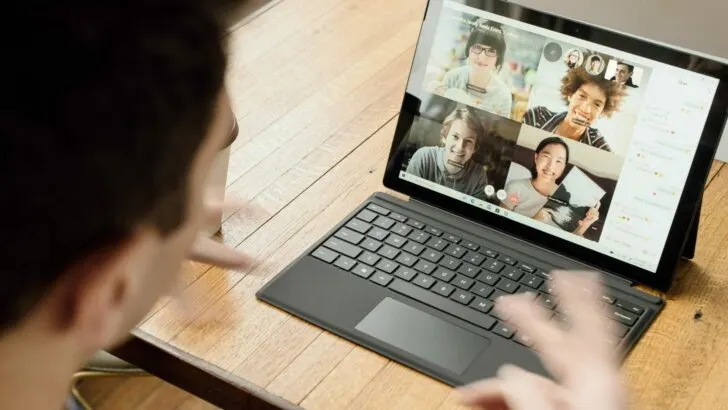
Staying connected with family and friends while on the road is a big reason to want good RV internet connectivity.
Entertainment
Access to the internet for web searches, reading news articles or watching the news, listening to music, checking out YouTube videos for “how-to” instructions ( ???? ) or entertainment, streaming television and movies, or playing video games are sources of enjoyment for most travelers, and absolute necessities for others. Reliable RV internet is a must-have for travelers looking to enjoy entertainment of almost any kind.

Having good mobile connectivity can let you watch a favorite show or movie.
How to Get Internet Access in Your RV
There are several ways to get internet for RVs (some more reliable than others, but no one-size-fits-all solution) and each has its pros and cons. Let’s run through them briefly, along with the challenges they present. From there, we’ll show you what we’ve done to address the shortcomings, to ultimately gain optimal RV internet access in our home-on-wheels.
Wi-Fi RV Internet Access
If you’ve ever taken a long road trip or a camping trip of any duration, you’ve probably tried to access the internet via Wi-Fi at some point. This means that you’re either dependent on a campground or RV park for a Wi-Fi signal (which you’re sharing with many other people) or it means you’re stopping to access public Wi-Fi at coffee shops (let’s be honest… Starbucks), McDonald’s, or another sort of public network like an “internet café”.
When you’re at a campground or RV resort, you rely on the campground’s Wi-Fi system, which is notoriously horrible and frustrating.
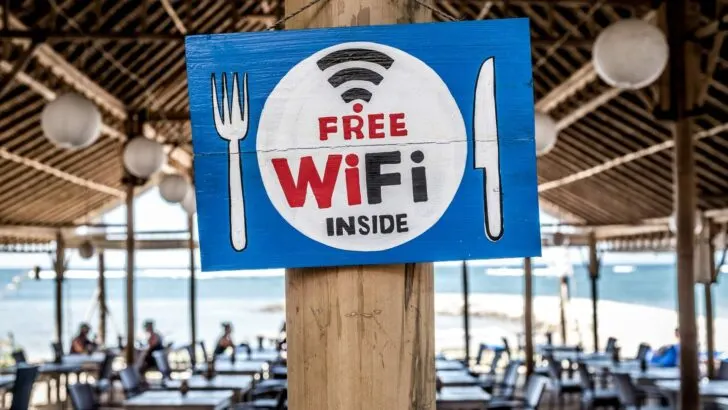
Using RV Park Wi-Fi to stay connected can often mean having to go where the Wi-Fi is.
The Wi-Fi access point is often a considerable distance from where you’re parked, and you and many other people are attempting to use the same Wi-Fi connection. All at once. Including the guy who’s trying to binge-watch Breaking Bad while his one kid plays Fortnite, his other kid tries to stream The Great British Baking Show, and his wife tries to watch the latest episode of Grey’s Anatomy (because rumor has it McDreamy is going to reappear on the beach this week).
In truth, streaming is nearly impossible when you’re connected to a shared Wi-Fi network like this. In many cases, the Wi-Fi signal itself is too weak, and in others, the internet connection that powers a park’s Wi-Fi isn’t up to the task… because the more remote you are, the more likely it is that the park doesn’t have access to high-speed, high-throughput internet.
Moreover, you’ll have no coverage at all while you’re traveling from one destination to the next, or when staying in a campground that doesn’t offer Wi-Fi at all.
In short, Wi-Fi RV internet access probably lacks the internet mojo you need unless all you need to do is email a friend back home to ask him or her the score of the game you can’t watch. ????
Cellular RV Internet Access
Cellular coverage and available speeds have dramatically improved since we started RVing nearly two decades ago. It has, without a doubt, become the first choice for most RVers. Suppose you tend to travel in developed areas with very good coverage. In that case, there’s a fair chance that you may be satisfied with your cellular access, especially if you have an unlimited data plan (and it isn’t throttled).
And you may even be satisfied using a mobile hotspot as your primary cellular data source.
But depending on your access needs and where you travel, cellular access might not be sufficient without additional boosting equipment.

Boondocking in remote places is great, but may require cellular boosting if you’re not close to a cell tower.
We’re a good example of the limitations of cellular RV internet access. Not only are our mobile internet requirements extensive, but we also prefer to boondock in remote locations for long stretches of time. This means we might need to work in the middle of the desert, far away from the closest cellular tower.
If John needs to download large files for business and Peter wants to stream Scott Joplin’s Greatest Hits while he’s editing videos, that could be a real challenge via cellular in the middle of someplace as remote as Trona Pinnacles. Even with the best boosting equipment, you can’t improve a cellular signal that doesn’t exist.
Satellite RV Internet Access
There’s been lots of buzz of late about satellite internet access due to SpaceX’s StarLink and Amazon’s Project Kuiper. These are incredibly promising developments, and we’re excited to see how they evolve.
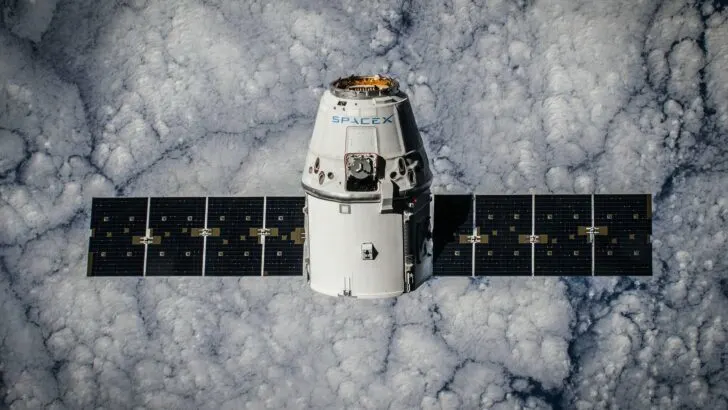
SpaceX and Amazon are building out low Earth orbit satellite arrays for internet connectivity.
But StarLink, currently in its beta, will need as many as 42,000 satellites in its constellation for full global coverage, and it could be a year or two before service becomes available in many areas. Initial reports of speeds in covered areas have been quite promising, but there’s no guarantee they’ll be able to maintain that level of service as more and more users join up. Even with a huge constellation of satellites, there are limits to how much data they can transmit/receive. Time will tell.
Project Kuiper, also very promising, will only have half its satellites available by 2026, according to the FCC. We’re excited to see how this fascinating project emerges as well, but it’ll be a while before it’s ready for prime time.
And currently-available satellite internet options (like the MotoSat satellite internet we used to have on our RV, but which is now defunct) suffer from high costs (both upfront equipment costs and ongoing service plans), limited speeds, and strict data caps. Plus, because the satellites they use often rely on high Earth, geosynchronous orbits (22,000 miles above the surface), latency (the time delay between when you submit a request from your computer to when the “answer” comes back) can be significant, making them unusable for time-sensitive applications like voice/video calls.
So, while satellite RV internet access is a promising concept (especially because, when it works, you have connectivity wherever there’s a view of the sky), it’s still in its infancy, it’s expensive both upfront and ongoing, and satellite internet – so far – is just too slow.
This brings us to our RV internet access solutions for 2021 and how we’ve upgraded our tech cabinet to achieve our mobile internet goals.
Why Did We Change/Upgrade Our RV Internet Access Equipment?
The simple answer to this question is that it’s necessary for us to be connected. A strong, consistent, reliable internet connection is not a luxury for us – it’s a necessity. We’re running several businesses, our customers rely on us to complete work on schedule, and this involves being online no matter where we are.
Prior to this upgrade, we were using a WeBoost Drive 4G-X cellular booster with OTR antenna mounted on the roof, a cellular hotspot/Jetpack device from our cellular carrier (often in conjunction with a small Netgear MIMO antenna connected directly to it), and a Wi-FiRanger for maximizing our ability to connect to Wi-Fi at RV parks. It was a decent system and would be satisfactory for many people. But for working-age full-time RVers with a significant online workload (or any other people who have a greater need for reliable connectivity), it just wasn’t enough.
We got tired of constantly tinkering with components to get them to work wherever we were located, dealing with connection dropouts, and having to regularly reconfigure things to get the right level of boosting. We found it annoying and disruptive to have to keep connecting our devices to different networks, and we honestly just don’t have the time for any of that. Thus, the upgrade!
What Do We Use for Our RV Internet Access Now?
Our new system is fantastic! And by “fantastic” we mean it’s no muss, no fuss, it just works when we need it to, and it works very well. We’ll run through each of the components we’re currently using, telling you what each achieves for us.
Pepwave MAX Transit DUO Router
We got our Pepwave MAX Transit DUO FirstNet “PrimeCare Edition” Dual Modem LTE-Advanced Mobile Router (that’s a mouthful, isn’t it?!) from MobileMustHave.com (use discount code “RVGEEKS” to save 5%). It has two cellular modems (dual CAT-12) that can accommodate up to four SIM cards ????. That means you COULD use a SIM card for four separate cellular data plans (though you don’t have to), which provides failover for service continuity (if one carrier slows or signal gets weak, the Pepwave switches seamlessly to another carrier) as well as an option for higher throughput if you configure it to use Peplink’s SpeedFusion service (where two or more internet connections can be “bonded” together to act as one, faster connection). You can even set data usage limits per SIM, so the plans don’t all have to be the same capacity.
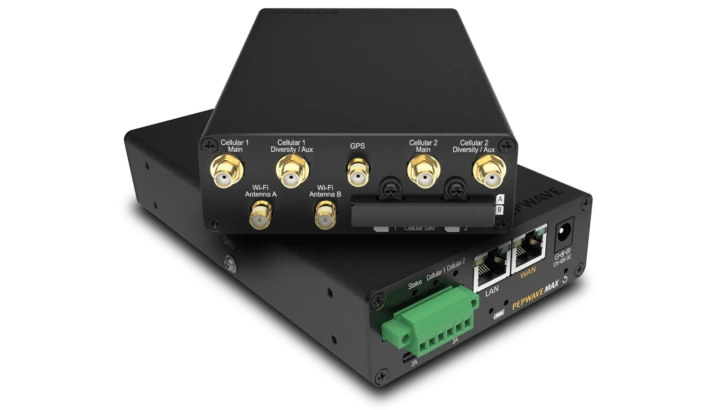
The Pepwave MAX Transit Duo supports up to 4 SIM cards for failover redundancy or SpeedFusion bonding.
We’ve been using our Pepwave with only a single SIM card that has a high-level AT&T plan (also purchased through MobileMustHave), which has been meeting our needs quite well. It has a very high data allowance (currently set at 500GB/month) which is plenty of data, even for us.
In the few instances when we’re in an area that has no (or extremely poor) AT&T coverage, we use the backup plan we have in our iPhone that’s on a different carrier (having multiple carriers is ALWAYS a good idea to be sure you can stay connected). So far, that combination has worked very well for us, relying on the high-data-cap AT&T plan as our primary data source… and a smaller plan on another carrier as a backup.
The Pepwave MAX also offers Wi-Fi for our local area network (that we can use to connect all of our onboard devices), as well as Wi-Fi-as-WAN for connecting to RV park Wi-Fi networks and other external Wi-Fi as the connection to the Internet (occasionally, we use Wi-Fi-as-WAN to connect the Pepwave to our smartphone’s hotspot), which replaces the functionality of our old Wi-FiRanger.
What we love about this router, in general, is that it’s robust. It’s a significant step above consumer-grade equipment and is designed for stability and reliability. And it just works. Once powered up, it never needs rebooting or tinkering. It’s a mobile must-have for us for sure, and has significantly transformed our ability to stay online while staying mobile.
Parsec Husky 7-in-1 Magnet-Mount Roof Antenna
Also from MobileMustHave.com, the Parsec Husky 7-in-1 Magnet-Mount Roof Antenna is comprised of four cellular antennas (two pairs for dual MIMO), two Wi-Fi antennas (2.4GHz and 5GHz), and a GPS antenna. This 7-in-1 antenna is a fantastic piece of our kit and, in conjunction with our Pepwave router, makes for a truly remarkable upgrade of our mobile internet system.
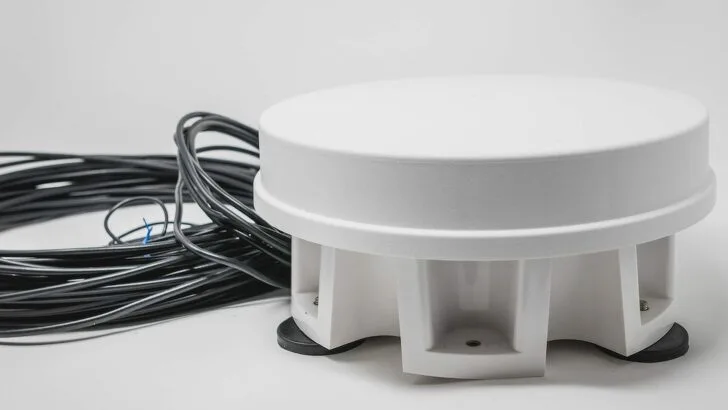
The Parsec Husky Pro 7-in-1 magnetic-mount roof antenna has 4 cellular antennas, 2 Wi-Fi antennas, and a GPS antenna.
We opted for the magnet-mount version of the Parsec, even though our roof isn’t metal, because it eliminated the need for an additional roof penetration (the standard Parsec antenna has a stud mount that’s designed to pass the cables through the roof and secure the antenna). In order to attach it, we mounted a 2′ x 2′ galvanized steel sheet using a combination of Dicor (underneath the plate as an adhesive) and Eternabond (sealing the edges).
In addition to providing a magnetic surface for the Parsec to mount to, it also acts as a ground plane. Ground planes are a surface that reflects radio waves to the antenna, improving its performance. Parsec doesn’t require a ground plane for this antenna, which means we could have used a smaller galvanized steel sheet just for the magnets to attach to. But we figured we might as well use a larger, 2′ x 2′ sheet of steel to get both benefits.
weBoost Drive Reach RV cellular booster
We’ve replaced our old weBoost Drive 4G-X cellular booster with weBoost’s new model — the Drive Reach RV OTR. In addition to coming with a newer, updated roof-mount antenna, the Drive Reach booster claims to reach towers up to 74% farther away. While we haven’t completed scientific testing to confirm this, we can say that with use over this past year, we noticed that we could get stronger, more reliable, and faster connections in places that used to be frustrating.
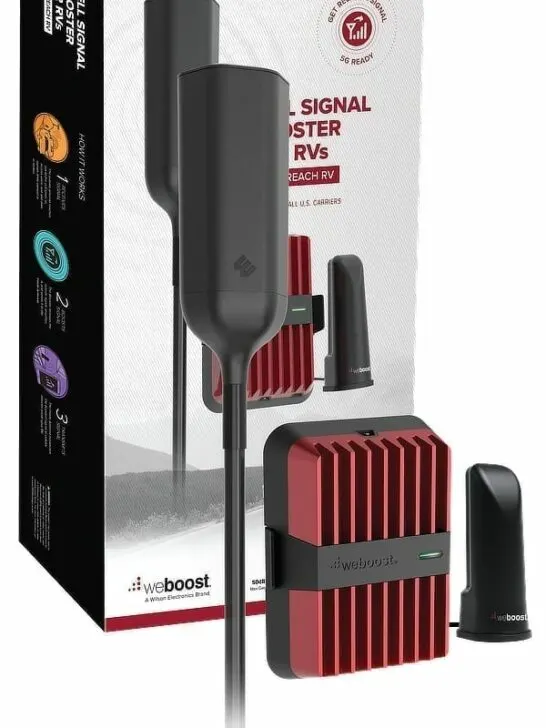
The weBoost Drive Reach RV cellular booster includes everything you need to get the maximum, mobile boosting for your RV internet and calls.
We utilized the same mounting plate that we created when we installed our original Drive 4G-X with OTR antenna, but moved it further forward, adjacent to the Parsec Husky antenna.
With our original installation, we had to mount the exterior, roof mount antenna as far back on the roof as we could. That was because the internal, “candy bar” antenna was mounted on our dash, to provide boosting to our cell phone while driving.
But with cellular boosters, you need to ensure that the internal and external antennas are far enough apart (vertically, horizontally, or a combination of both) to ensure that the signal being broadcast by the internal antenna doesn’t get picked up by the external antenna. That condition is called oscillation, and it’s like feedback between a microphone and speaker. When it happens, the booster has to reduce its power… which can degrade or eliminate the benefit of using it in the first place.
With our new installation, we wanted to be able to use the new interior antenna either in the front of the RV (placed on the floor to provide enough vertical separation) OR on the dining room table (which provides enough horizontal distance between the two antennas). So by installing the roof-mount antenna as far forward as we could, we were able to accommodate both inside locations for the interior antenna. So far, so good.
What Else is in Our RV Tech Cabinet?
In addition to the new equipment noted above, which is all about getting & staying connected, we also have the following components in our RV tech cabinet:
72 TB QNAP NAS (Network Attached Storage)
We’ve had this device onboard for many years, but since our last video, we’ve increased the size of the hard drives in it from 6 x 4TB to 6 x 12TB, providing 72TB of storage. This may sound like overkill, but because we’re shooting 4K HDR footage for The RVers, and often running as many as 3 cameras at a time for up to an hour, we’ve needed to expand our storage capacity to handle it all. Our model is no longer made, but if we had to replace it today, we’d opt for the QNAP TVS-672XT 6-bay model.
AppleTV
We originally bought our AppleTV because the TV in our RV was too old to be a “smart” TV, with apps for accessing streaming services, etc. Even though we’ve since upgraded to a new Vizio V405 40″ 4K Smart TV, we prefer the Apple TV interface. It also makes it super easy to send content we’re watching on any of our other devices up to the “big screen” using Airplay. And since the new TV is 4K HDR-compatible, we’re going to be replacing the current AppleTV HD with the latest AppleTV 4K that comes with an improved remote control AND supports high frame rate HDR video.
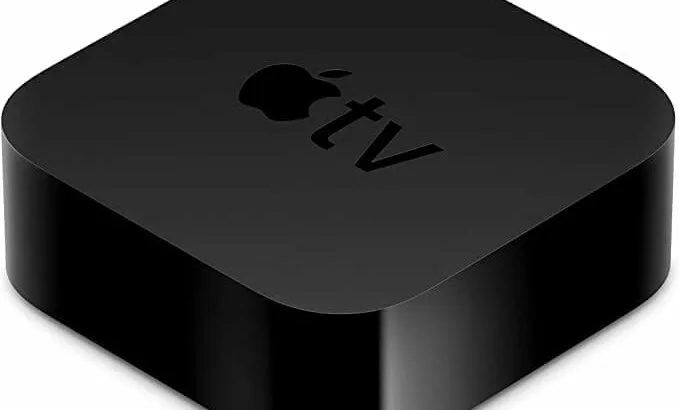
We use our Apple TV for streaming entertainment to our TV, and to allow other Apple devices to Airplay to it.
8-Port Gigabit Ethernet Switch
Even though most of our devices can all connect to our local network using Wi-Fi, we prefer to use Ethernet connections whenever possible for improved speed… and to reduce the traffic on the Wi-Fi network. With the TP-Link 8-port Gigabit Ethernet Switch installed, we have all the extra ethernet ports we need to connect all our equipment together (ComBox, TV, etc.)
ExpressVPN Wireless Router
We added a Linksys WRT3200 Wi-Fi Router to our system. It isn’t needed for a typical situation, since the Pepwave router provides a local Wi-Fi network of its own. But because we spend a lot of time between Canada and the US, we bought this particular router because it comes with ExpressVPN software installed (a separate ExpressVPN service subscription is required).
Having the VPN software installed directly on the router allows us to spoof a US IP address for our US-based streaming service subscriptions (Hulu, HBO Max, etc.) when we’re not in the country (and, of course, it can work in reverse for Canadians who are geo-restricted from watching Canadian services while traveling in the US).
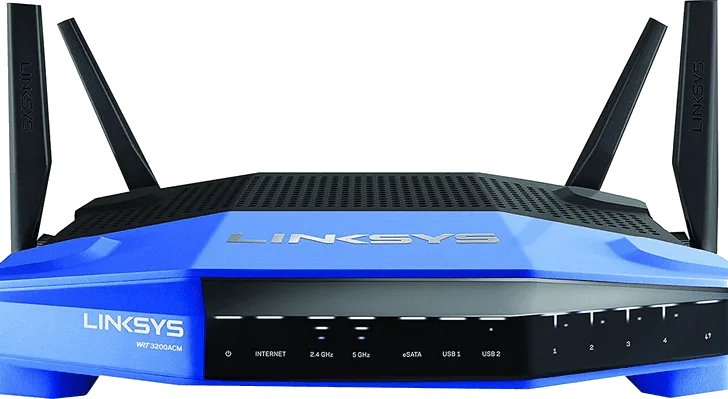
Our Linksys WRT3200ACM Wireless Router with ExpressVPN software enables us to stream US-based services while in Canada.
If you only need/want to do this with laptops or smart devices (smartphones, tablets, etc), you can run the dedicated ExpressVPN app (or other similar services) on them directly, and avoid the cost of this extra equipment. But since our smart TV and Apple TV can’t use a VPN app, this was the most seamless option. While you can achieve most of this same functionality with Pepwave, the ExpressVPN Linksys router offers a simpler interface for VPN management AND it allows you to determine which devices are routed through the VPN, and which aren’t.
So we’re now using this to provide the Wi-Fi network in our RV and have all our devices connected through it. We just switch it’s WAN (Internet) connection from the Pepwave (while we’re traveling) to a cable modem (if we’re stationary for a while). The added advantage is that it frees up both Wi-Fi channels on the Pepwave for use in connecting to external Wi-Fi networks.
Analog Telephone Adapter (or VOIP adapter)
Our Obihai VOIP adapter enables us to use a regular cordless phone with our VOIP phone service. Again, most people wouldn’t have a need for this device. But we find it to be quite helpful, and a bit “home-ier” to use with our VOIP phone service, allowing us to both be on separate calls at the same time. It works with virtually any VOIP service provider, including Google Voice if you have it.
10-Outlet Surge Protector and Switch Control
With all of the high-tech gear in our RV, you’d think this 10-outlet surge protector and switch control unit would be the LEAST interesting addition. But, honestly, it’s one of our favorite parts of this project. It fit perfectly in the spot where our old VCR/DVD combo unit used to be (while still leaving room behind it for coiling cables) and provides a quick & easy way to turn each device on/off, giving us precise control over what equipment is drawing power. A big boon when we need to conserve our battery while boondocking. And it’s much better than the mess of surge protectors and individual plugs we had to deal with before.
The Giveaway! A $1,200 MobileMustHave Speed Demon+ Bundle
Don’t miss out on our MobileMustHave Giveaway for a chance to win a Speed Demon+ Bundle. This bundle includes a Pepwave Max Transit PrimeCare Router with a single CAT 18 LTE-Advanced Pro modem (which supports up to 2 SIM cards) and a Parsec Husky Pro 7-in-1 5G antenna, all with an MSRP of over $1,200!
The giveaway ends on Friday, May 28th, 2021 at midnight Eastern Time, so be sure to enter by then:
Enter The Giveaway Here
NOTE: The giveaway entry widget should be showing above this text. Can’t see it? Click here to access it directly.
UPDATE May 29, 2021: Congratulations to Chris W. for being selected as our winner in this giveaway. We know he’s going to love using his new Speed Demon + bundle to stay connected while on the road in his Cyclone toy hauler! Thanks to everyone who entered… if you’re still interested in upgrading your connectivity equipment, keep reading for a discount!
Discount On Equipment for Your RV Internet Access
Congratulations! You’ve made it to the end of the post, which means that even if you didn’t win the giveaway above, you can still save 5% on any purchase at MobileMustHave.com from now through the end of 2021 with discount code “RVGEEKS”
Thanks to the latest additions to our RV internet arsenal from MobileMustHave, we're able to stay connected more reliably... and more remotely... than we ever could before. We couldn't be happier...Show More
Thanks to the latest additions to our RV internet arsenal from MobileMustHave, we're able to stay connected more reliably... and more remotely... than we ever could before. We couldn't be happier with the equipment we now have!
Upgrade your RV internet connectivity with great products from Peplink, WeBoost, Parsec, Poynting, Mobile Mark, and more. And while you're there, look at other great products like Viair Compressors!
Watch our video about our RV internet connectivity solutions for 2021
Save 5% on your equipment order at MobileMustHave.com when you click the button on this deal or use discount code "RVGEEKS" at checkout!
Show LessGeek Out with Us Every Week
Join our newsletter to learn about all things RV-related. Every week we offer free tips, tricks, product reviews, and more to our online community of RVers. Whether this is your first time on the road or you’re a seasoned expert, we’d love for you to geek out with us!



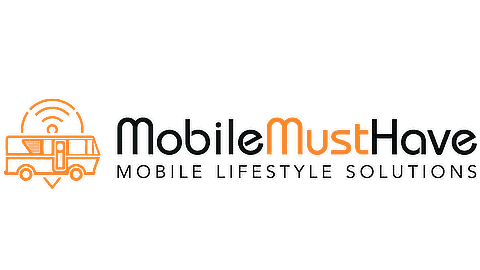
Jeff Heerts
Tuesday 5th of April 2022
Good morning!!
I've had a terrible experience with Mobilemusthave. I'm afraid that if this is the experience trying to be a customer I can't imagine what it will be like if I actually become a customer and have a problem. Do you recommend any other companies to set up cellular service on an RV?
Thanks so much for taking the time. I love you guys and your videos.
TheRVgeeks
Tuesday 5th of April 2022
Hi Jeff. So sorry to hear about your experience. We recommend Mobile Must Have not only because we've had such a great experience with them ourselves, but because the type of experience you're describing isn't something we've ever heard about from them from anyone else either. We don't use anyone else for our connectivity gear, but we also do all our own installation work. So if you're interested in having someone set your rig up for you, we're sorry we don't know who to recommend.
Kristen
Saturday 15th of January 2022
Hello!!
Newbie here... I'm planning to work from my new TT this summer and next winter intermittently (not full-time) and one of my biggest concerns is the internet. I read through your blog, and two things... I'm still confused on what I should get since I can't afford to spend thousands on this... (Even $500 would be tough for me to justify with our current budget challenges, to be honest. Especially given all of the other additional things we need to purchase in order to hit the road.) And #2, I know less about internet connectivity than I thought apparently because some of this stuff confused the heck of me...!
So to sum up my question... What can I do to increase my wifi/internet connectivity without spending a million dollars? Right now I'm thinking using my phone (Verizon) as a hotspot is the best bet, but I'm not sure if it will work for my (many) Zoom meetings... Thoughts?
TheRVgeeks
Saturday 15th of January 2022
Hi Kristen... it can, indeed, be hard to figure out what's going to be the best solution for staying connected. Budget is certainly one of them. The other is your typical area of travel. If you plan to stay close to civilization, so that you'll have better access to cell signal, that can be a bit easier. If, however, you plan to stray off the beaten path into some truly remote areas... then things get harder (and more expensive). You can definitely start out using your phone as a hotspot (since there's no additional cost for that) and see how things go. If that doesn't work for you, you could try the next step up which would be to get a dedicated cellular hotspot device (commonly known as a JetPack or a MiFi... though those are really just branded names for that type of device) and pair it with a larger, directional MIMO (Multiple In, Multiple Out) antenna like the very reasonably priced Netgear Mimo antenna (available on Amazon)... just make sure that the cellular hotspot device has the necessary TS-9 antenna ports to hook the Netgear up to (many do). Then you can suction cup the antenna into whatever window gets you the best signal... connect any device that needs access to the cellular hotspot device via WiFi... and surf (or Zoom) away.
Typically, you can add the hotspot device to your plan for a reasonable cost (often just $5-$10/month) and use it to share your plan's data. Just read the details of that... oftentimes service/speeds are limited beyond a monthly amount of data used via the hotspot.
Or you could get a second data-only plan just for the hotspot device... on another carrier (like AT&T or T-Mobile)... so you'd have a choice if the Verizon plan on your phone wasn't providing good coverage.
Hope this all helps!
Derek
Monday 9th of August 2021
Hi guys,
Thanks for the great review and for giving us some additional ideas on our full-time tech setup. We also run a QNAP NAS and it has seen many hard miles between our boat in the Caribbean and now a Class A motorhome.
My question for you is - what do you do with the NAS while underway? Ours is located in the same place yours is, and while there isn't huge vibration or bouncing possible, there isn't none either. Do you actually shut the device off while travelling or just leave it running all the time?
D
TheRVgeeks
Monday 9th of August 2021
Hey Derek. Glad you liked it! And good to hear there are other RVing QNAP users out there! ???? Good question. We've always erred on the side of caution and, since we don't have need of the files on the QNAP when we're on the road, have shut it down completely before we break camp. Can be a bit of a PITA if we need a file quickly when we get where we're going and have to wait for it to boot up. But we figure the extra TLC it's providing for the drives is worth the slight inconvenience.
Richard McKinney
Tuesday 29th of June 2021
I am considering purchasing the Parsec Husky antenna with the magnetic mount. Is the magnetic mount secure enough that the antenna does not move while driving.
Thanks, I enjoy your various videos
TheRVgeeks
Tuesday 29th of June 2021
Thanks Richard! We can confirm that the magnets on that antenna are unbelievably powerful and it does not move at all. And that’s with it mounted right up at the very front of our rig in the windiest location. We’ve put over 1500 miles on since installing it, including lots of highway miles, and it hasn’t budged.
Barry
Saturday 19th of June 2021
I would like to organize my cabinet like yours, the power supply cords seem the biggest hog for space. What do you do to for that problem.
TheRVgeeks
Sunday 20th of June 2021
Hey Barry. That's true... the power cords take up a lot of space. That's why we left all of that room behind the power switch box... it was the space needed to coil up extra cords, etc.